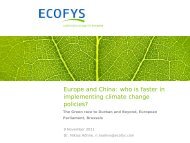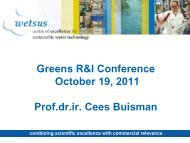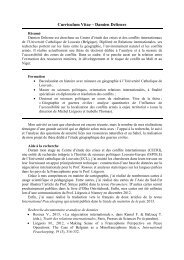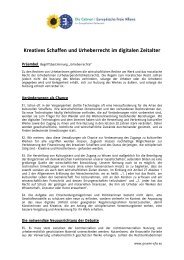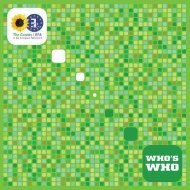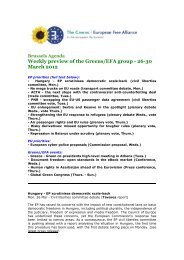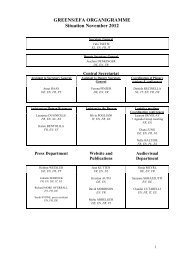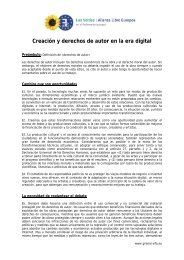Agro-Biotechnology: - The Greens | European Free Alliance
Agro-Biotechnology: - The Greens | European Free Alliance
Agro-Biotechnology: - The Greens | European Free Alliance
You also want an ePaper? Increase the reach of your titles
YUMPU automatically turns print PDFs into web optimized ePapers that Google loves.
Technical development | Cloned farm animals - a ‚killing application‘? | 11<br />
In future more advanced technologies, such as nuclear transfer from induced<br />
pluripotent 8 stem cells (iPS cells), might be available to be used here. Some<br />
experts expect major technical progress in the combination of SCNT, cell culturing,<br />
iPS cell technology, marker assisted selection and genetic engineering,<br />
that will impact both agriculture and medical research. For example Niemann<br />
et al. (2009) explain:<br />
“<strong>The</strong> convergence of recent advances in reproductive technology with the<br />
tools of molecular biology opens a new dimension for animal breeding.”<br />
And the <strong>European</strong> Group on Ethics in Science and New Technologies 9 (EGE,<br />
2008) explains:<br />
“In the long run, the cloning of farm animals could be combined with genetic<br />
modifications so as to have livestock with specific characteristics, for example,<br />
genetic resistance to specific diseases (bovine BSE, mastitis, brucellosis,<br />
tropical diseases etc.) or producing food products of higher value than natural<br />
ones, so-called "nutraceuticals", such as low-lactose milk, kappa casein rich<br />
milk, better beef from myostatin TG cattle etc. In this way, cloning – in combination<br />
with transgenesis – may be a potentially rich source of edible products<br />
for biomedical purposes (e.g. production of proteins, such as milk proteins,<br />
to be used for therapeutic purposes at lower cost, or providing a source of<br />
organs or tissue for xenotransplantation).”<br />
Given this background and recent expectations by experts in the field, it<br />
is necessary to examine the debate about the cloning of farm animals in a<br />
broader technical context. After some years of economic disappointment and<br />
only slow technical process, the proponents of genetic engineering in livestock<br />
are now hoping to reach a new stage of technical possibilities, as a result of a<br />
combination of methods such as SCNT, genetic engineering, culturing of embryonic<br />
cells (including iPS cells) and marker assisted selection (Schnieke, 2009,<br />
Niemann et al., 2009). SCNT in farm animals is practised by some institutions<br />
nowadays and is likely to be just a first step for further technical developments<br />
in engineering and propagating of livestock for commercial purposes that are<br />
around the corner. Thus taking a decision on SCNT technology for food production<br />
should keep in mind that <strong>European</strong> agriculture might be faced with<br />
further challenges in animal production that might encounter conflicts to “the<br />
<strong>European</strong> agricultural model, which is based on product quality, environmentfriendly<br />
principles and respect for stringent animal welfare conditions.” 10<br />
8 Cells, capable of differentiating into more than one cell type.<br />
9 <strong>The</strong> task of the EGE is to examine ethical questions arising from science and new technologies<br />
and on this basis to issue Opinions to the <strong>European</strong> Commission in connection with the preparation<br />
and implementation of Community legislation or policies; http://ec.europa.eu/european_group_ethics/<br />
index_en.htm<br />
10 http://www.europarl.europa.eu/sides/getDoc.do?type=IM-PRESS&reference=20080623IPR32472&s<br />
econdRef=0&language=EN




